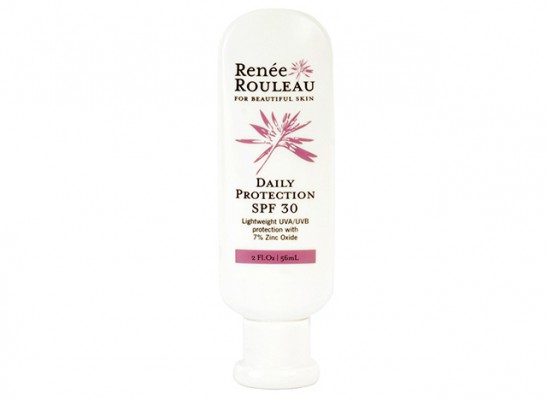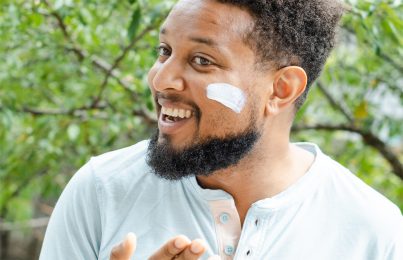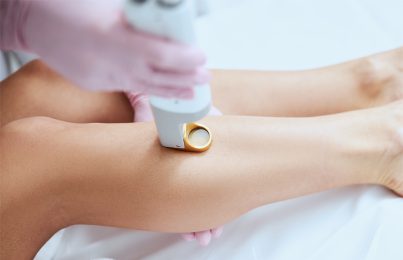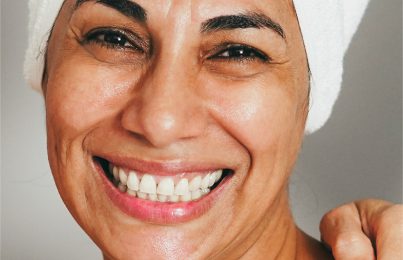Facts:
1. Melanoma is the fastest growing and most deadly type of cancer.
2. One out of five Americans will eventually develop skin cancer.
3. 40-50% of Americans will develop skin cancer by the age of 65.
4. With awareness, skin cancer can be easily prevented.
5. In Caucasians, most skin cancers present initially on the skin itself, usually in areas of sun exposure such as the face, scalp, back, nose, and arms.
6. In Asian, African, or Hispanic people with darker complexions, melanomas often present in non-sun exposed – or less pigmented – areas such as the palms of the hand or on the nail beds.
Answer These Questions:
1. As a teenager, did you work at least three summers outdoors?
2. Have you had three or more blistering sunburns before age 20?
3. Do you have red or blonde hair, and fair skin that burns easily?
4. Do you have lots of freckles on your upper back?
5. Has anyone in your family had melanoma?
6. Do you have rough, red spots on parts of your body that are seldom – or never – exposed to the sun?
If you answered “yes” to only three of these questions, your risk of developing a melanoma is 20-25 times higher than that of the general population.
Early Detection Is The Key: The “ABCD” System
A is for Asymmetry, or irregularity of shape – meaning that you cannot draw a line through it to create matching halves. Non-cancerous pigmented lesions usually are round and symmetrical (when divided down the middle, their halves have matching shapes), but early malignant melanomas usually are asymmetrical.
B is for irregular Border – common to cancerous growths. Benign growths usually have regular margins.
C is for Color. A harmless growth generally is one color overall and flat. Cancerous growths, however, harbor various shades – from tan to brown to black, sometimes mixed in with pink, red, or white.
D is for Diameter. If the growth measures more than 6 millimeters across (about ¼”), it is dangerous.
All of us – black-skinned to fair – need sun protection. The sun’s ultraviolet light harms our skin, including the soles of our feet and our palms. There is evidence that damage done during childhood and the teen years creates the greatest risk, so we must educate our children.
An annual check-up by a dermatologist is crucial; however, you can also take your health into your own hands by keeping an eye on moles and skin lesions.
“When in doubt, check it out!”
To Prevent Sun Damage And Dangerous UV Rays:
1. Avoid the sun, especially during the hours of 10 AM to 3 PM. As long as the sun is shining, you are getting exposure. Wear a sun block/moisturizer with a minimum rating of SPF #30, 365 days a year, no matter what.
2. Wear a broad-brimmed hat to shade the face.
3. Wear long pants and long sleeves. There are some companies out there that sell clothing and hats especially designed to protect the wearer from harmful UV rays.
4. Wear UV-protecting sunglasses.
5. Reapply sun block after excessive sweating, swimming, or exercising.
6. Wear makeup with UV protection.
7. Avoid tanning beds; they give off UVA radiation which is harmful to the skin.
And finally, in addition to the fact that sun exposure increases your risk of skin cancer, it is also the main cause of wrinkles and premature aging of the skin. Research indicates that 78% of the sun damage that one gets in a lifetime is from incidental exposure. That means that activities such as driving your car, walking to the mailbox, sitting in your office next to a window give you the majority of your sun exposure! I highly recommend Daily Protection SPF 30!
Read: How To Apply Sunscreen To The Face And Neck
Read: Why Your Sunscreen May Not Be Protecting Your Skin Enough
Read: Slathering On Sunscreen But Still Seeing Brown Spots?
Read: Do I Need To Wear Sunscreen In The Winter?
Which skin care products are best for you? See our nine skin types or take the Skin Type Quiz and get products recommended.
Need expert advice from a licensed esthetician? Schedule a virtual consultation to get customized advice in person, over the phone or online via Skype or FaceTime.
For more expert advice check out the blog. Also sign up for our skin tip e-newsletter, follow Renée Rouleau on Twitter and Instagram and join the discussion on our Facebook page. You’ll be your own skin care expert in no time. Get the #ReneeRouleauGlow!
Celebrity Esthetician & Skincare Expert
As an esthetician trained in cosmetic chemistry, Renée Rouleau has spent 30 years researching skin, educating her audience, and building an award-winning line of products. Her hands-on experience as an esthetician and trusted skin care expert has created a real-world solution — products that are formulated for nine different types of skin so your face will get exactly what it needs to look and feel its best. Trusted by celebrities, editors, bloggers, and skincare obsessives around the globe, her vast real-world knowledge and constant research are why Marie Claire calls her “the most passionate skin practitioner we know.”



